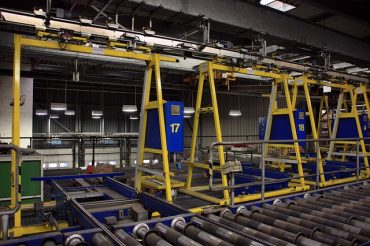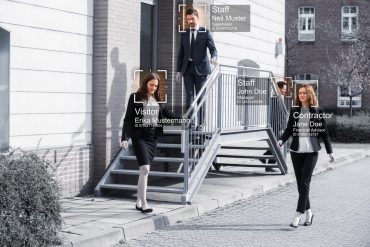
A modular “coreless” approach allows businesses to take a more composable approach to development, phasing in best-of-breed solutions and phasing out functions that are no longer needed.
For today’s businesses, the ability to dynamically adapt to challenging market conditions has become indispensable. With the effects of a global pandemic and the economic turbulence being felt, organizations that have the ability to evolve their digital transformation roadmaps on the fly will prove the most resilient. However, for the majority of businesses, this level of digital agility does not come easy. Many have spent the past couple of decades piling their technology stacks high, building on bloated and restrictive monolithic platforms that make it difficult to integrate new services and functionality. When these businesses look at their digital ecosystems, they’re met with challenges instead of opportunities.
That’s why the idea of a “coreless enterprise” is beginning to gather momentum. Instead of limiting themselves by investing in a static, outdated platform, businesses are instead waking up to modular, microservice-based architecture that allows them to take a more composable approach to their digital transformation initiatives. While a central platform or “core” risks obsolescence the moment it’s deployed, a modular “coreless” approach allows businesses to take a more composable approach to development, phasing in best-of-breed solutions and phasing out functions that are no longer needed – all without disruption, downtime or the guilt associated with sunk costs.
Rather than piling technology stacks high, like a tower of bricks that could tumble if one piece were to be removed, organizations can instead spread their stacks wide, like a sturdy wall in which bricks can be seamlessly interchanged in pursuit of greater efficiency or enhancing the customer experience.
According to Gartner, who coined the term “composable commerce,” organizations that embrace this coreless, modular approach to digital transformation will be outpacing their competitors by roughly 80% when it comes to the deployment of new services and features by 2023.
See also: The Growing Gains of Serverless Event-Driven Architecture
The monolithic approach is no longer fit for purpose
The banking sector was one of the first to encounter the limitations of monolithic architecture. In Europe, for instance, when PSD2 financial regulations came into force in 2018, all banks were required to open up their data, allowing customers to share their financial information with third-party service providers. Better known as “open banking,” this is what allows customers to connect third-party budgeting apps and cellular payment services to their bank accounts.
This was great news for customers, but how could big banks built on monolithic systems compete with digitally native start-ups that were using their once-proprietary data to offer valuable money-based services? In one fell swoop, the ability for banks to cross-sell and engage customers was under threat.
Enter “coreless banking” – a new microservice-based approach that allows banks to pivot quickly and add in new services covering everything from contactless payments to money-management apps. Banks started developing new functions using “headless” APIs that could work seamlessly and interchangeably with each other. Now extend this to all organizations across all industries, and that’s where the future is heading.
Uncoupling the front end and back end
When we refer to “headless” architecture, we’re really referring to the uncoupling of the service layer and the data layer of any given system. In order for enterprises to compete with digital natives and their greenfield development, this has become absolutely critical.
The service layer is the front end, or what an end user sees and interacts with when they engage with a particular application. The data layer is the back end, the technology that powers the underlying functionality. In a conventional, monolithic system, the front end and back end are inextricably linked and bound together, meaning any changes to the front end aren’t possible without taking things temporarily offline. It’s slow, limiting, and costs businesses a lot in terms of productivity and missed opportunities. A headless approach moves businesses away from these tightly coupled frameworks, such as PHP, that aren’t compatible with modern web APIs, and allows an organization to make on-the-fly changes to their front-end user experience or their back-end processes without running the risk of breaking a critical process or having to take things offline.
Microservice-based architecture
A microservice is a small piece of individual software that is designed to do one thing and one thing only. In hospitality, for instance, a microservice might be employed to facilitate remote ordering or accept hotel bookings. These are things that would otherwise be tied together under one monolithic roof, where adding one new feature would be akin to gently trying to remove a Jenga piece and hoping the tower didn’t fall. It was fine for its time, but times move on, and this monolithic way of doing things simply won’t cut it in the age of agile, multi-touchpoint commerce.
Enterprises are much the same, with new end-user touch points constantly being added into the mix. They need to be able to tailor functionality, both at the service mesh and data mesh levels, without reinventing the wheel each and every time.
A culture of decentralization
Enterprises are used to proprietary systems and functionality. Most have spent years accumulating valuable data and carefully adding to their own precarious stack of technologies, and the temptation to centralize everything persists. This kind of thinking leads right back to monolithic architectures. And it is high time for businesses to move beyond the temptation to stack if they want to compete with digital natives (and with each other).
Gartner referred to this as “composable” architecture, and by its very nature, composable architecture needs to be decentralized. There is no central core or system, just a web or mesh of best-of-breed components that can be seamlessly integrated, removed, and replaced on the fly.
During the pandemic and the resulting lockdowns, one of the best examples of this was the innovation in the hospitality and logistics sector. The ability to queue jump and use an app to place your order from your front room for takeaway or for groceries – without having to venture out – became a necessity rather than a convenience. And the businesses that were able to roll out this functionality overnight were the ones that cornered the market.
It’s this decentralized, adaptable approach that enterprises need to leverage if they are going to go head-to-head with the competition in today’s landscape.





























